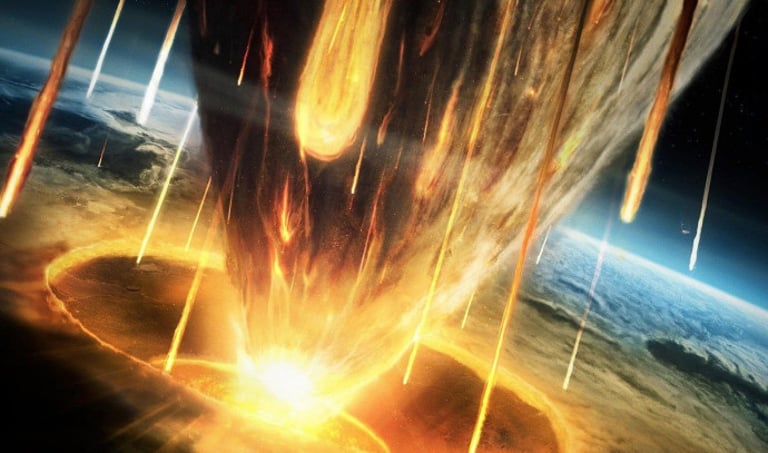Massive Ancient Asteroid Impact Knocked Ganymede Sideways, Reshaping Its Surface and Potential for Life
September 3, 2024
A recent study reveals that a massive asteroid, approximately 20 times larger than the one believed to have caused the extinction of the dinosaurs, impacted Jupiter's moon Ganymede around 4 billion years ago.
Ganymede, notable for its subsurface liquid water oceans and being larger than Mercury, experienced significant devastation from this impact.
Research led by Naoyuki Hirata from Kobe University suggests that distinctive furrows on Ganymede's surface, previously thought to be caused by multiple impacts, are actually remnants of this ancient asteroid strike.
The extensive furrow system aligns with Ganymede's tidal axis, indicating a significant mass redistribution due to the impact.
The European Space Agency's JUICE probe, set to arrive at Ganymede in 2034, aims to gather data that could clarify the effects of the impact and Ganymede's geological history.
Prof. Leigh Fletcher from the University of Leicester emphasized the importance of the JUICE mission in exploring Ganymede's surface and gravitational anomalies.
The collision caused Ganymede to be knocked sideways, significantly altering its orientation in the solar system.
The impact likely created a transient crater estimated to be between 870 and 994 miles wide, which was necessary to shift Ganymede's rotational axis.
As the ejected material settled, it formed a dense blanket around the impact site, increasing gravity in that area and causing Ganymede to reorient itself.
Ganymede's subsurface oceans, which may harbor life, have drawn significant interest, with NASA's Hubble telescope suggesting these oceans could be as deep as 60 miles.
The findings regarding Ganymede's impact were published in the journal Scientific Reports, highlighting the profound effects on the moon's geological and internal evolution.
Hirata aims to further investigate the thermal and structural effects of the impact on Ganymede's interior and its potential for life.
Summary based on 10 sources
Get a daily email with more Science stories
Sources

The Guardian • Sep 3, 2024
Jupiter’s moon Ganymede was struck by asteroid bigger than dinosaur-killing rock
Forbes • Sep 3, 2024
Jupiter’s Main Moon Was Struck By A Colossal Asteroid, Scientists Say
Time • Sep 4, 2024
Asteroid Bigger than Dino-Killer Knocked Jupiter Moon Sideways
Newsweek • Sep 3, 2024
'Giant Impact' 20x Size of Dino Killer Shifted Solar System's Largest Moon